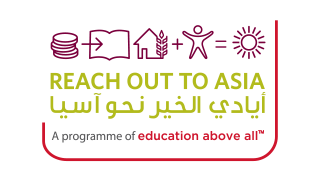Expanding Educational and Livelihood Resources in the Terai, with a Specific Focus on ICT and Youth
READ has developed a proposal that incorporates three key themes in order to provide rural communities in the selected districts Terai region with access to enhanced educational and livelihood opportunities through non-formal education, with a particular focus on youth engagement. This concept looks to focus on the several districts within the Terai, with this more narrow geographic focus allowing for more efficient programming and monitoring.
The concept has a particular focus on engaging youth (ages 10-25) to be active participants and to receive relevant and valuable training to improve their opportunities. The three major components are:
1. Scaling our Hub-Satellite Model with a Special Focus on Youth.
2. Deepening our Youth Engagement, including vocational opportunities.
3. Further Developing our ‘ICT for Purpose’ Program.
1. Scaling our Hub-Satellite Model with a Special Focus on Youth Background READ has successfully piloted a “Hub-Satellite” model in Nepal to provide deeper impact in select rural areas while reducing the overall cost of establishing a READ Center. The Hub-Satellite model creates interdependencies between a centrally located, full READ Center (called a “Hub”), and nearby smaller “Satellite” Centers.
Costs are reduced for each Center through the sharing of books and resources (much like integrated libraries in the US). While Hub Centers are often new buildings containing the aforementioned six sections, Satellites are smaller, often rehabilitated buildings that have many of the core components (library, women’s and children’s sections, ICT facility), but on a smaller scale.
Satellite Centers leverage many of the resources of the Hub, like the training hall, and also share services with the Hub, such as the circulation of books, outreach for literacy and livelihood activities, etc. They conduct joint programs together, such as health camps and community awareness efforts to have larger impact at a lower cost. This type of sharing has a secondary positive side effect of promoting dialogue, mutual understanding, cooperation and partnership, and peace building where there is conflict between communities. Through this model, READ can reach more remote communities that are too small for a Hub. By linking them with a Hub, more of these communities can be reached in a sustainable manner. Additionally, this type of model helps reduce expenses for the country offices, thereby enhancing the long-term sustainability of each country office.
2. Deepening Youth Engagement Background As mentioned in ‘The READ Model’ section above, Centers have programming for all age groups. Traditionally we have engaged youth indirectly in our Centers through: • ICT Activities – The ICT section includes Internet facilities and ICT training classes, from basic to advanced skills. Though they are for all ages, we find that youth are particularly engaged here.
• Sports – READ Centers include a sports section that provides equipment to be used by youth as well as adults. Centers will set up sports teams based on local interest, including football and cricket teams.
• Leadership building – We encourage youth to participate in some of the various subcommittees of each Center to build their leadership skills.
As part of this partnership, we would look to take our youth engagement a step further by partnering with one or more organizations to provide a more robust youth engagement initiative to reach at least 3,000 youth through leadership, life skills and health training, career counseling, sports, and academic support. We will partner Restless Development Nepal, a local NGO that works on a number of youth issues, to integrate some of their programming in our Centers. Restless Development will be the primary facilitator of the youth activities on the ground.
READ will help design the trainings, provide oversight and support on activities, and will work with the communities and the Center Management Committees to ensure that the Youth Leadership Clubs (YLC) are integrated into the READ Center activities and most importantly, have representation on the committee itself.
3. ICT for a Purpose Background In order to address the need for free public access to computers and Internet, particularly for underprivileged rural villagers, READ Centers offer ICT programs based on the various needs of the communities. As part of each Center, READ sets up an ICT section that has computers, furniture, MS Office and other software, Internet connectivity, and then provides trainings on using computers and various programs (from basic to advanced courses).
As part of our current grant with the Bill & Melinda Gates Foundation, we are working with a collection of partners/supporters – including a local ICT consultant, experts from the Gates Foundation and the Mortenson Center for International Library Programs, and IREX (an international nonprofit focused on creating innovative programs) – to further develop our ICT offerings so that we can extend beyond the basic current offerings and provide more impactful training.
Thus we have begun developing an enhanced ICT service called “ICT for Purpose” through which we will provide training that matches the specific needs of the beneficiaries (children, youth and adults). We are currently working with our consultant and local Nepal vendors to determine the right set up of ICT hardware, the appropriate alternative energy source, and whether to use low voltage hardware. I
n the next few months we will make a final assessment on the pros and cons of different configurations, their upfront costs, and their ongoing operating costs so that we can determine which solution will be cost effective and sustainable for the community in order for ICT Centers sections to be functional over the long run. We have also had some initial conversations with several solar vendors about partnering to create some revenue generating enterprises connected to these facilities in order to help offset the ongoing costs of the Center, thereby making them more sustainable. We are also in early discussions with TechSoup to procure discounted software.


















